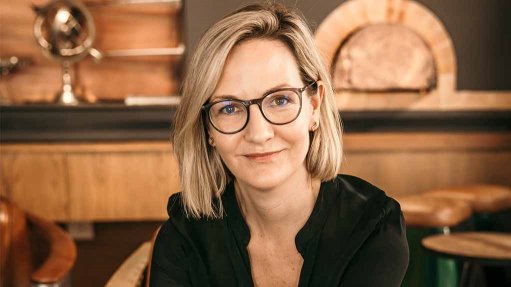Solar myths, misconceptions and FAQs
This article has been supplied as a media statement and is not written by Creamer Media. It may be available only for a limited time on this website.
(Q) Solar PV is priced out of reach of ordinary consumers
(A) Five years ago, solar – or photovoltaic (PV) – systems may have been prohibitively expensive for most residential customers, and required a significant upfront investment. However, the price of PV system components is dropping fast, and new business models allow consumers to lease-to-own or enjoy solar-as-a-service with no upfront cost.
(Q) Solar is the silver bullet for off-grid living
(A) Rooftop PV systems are certainly part of the solution to power instability and rising costs. However, solar power is not yet an ideal solution for power-intensive appliances like ovens, stoves or irons. This means that homeowners going off-grid would need to look at alternatives such as gas for cooking. At this stage, grid power remains a safe and relatively affordable choice for cooking, which is why we believe a hybrid solar – power utility system offers the best of both worlds – cost effectiveness and reliability.
(Q) Solar only works in broad daylight
(A) Solar PV technology has become more efficient in recent years, so that systems can now also perform on cloudy days. The power generated during the day will allow you to run many appliances without utility power. With efficient storage (batteries) as part of your PV system, you will also be able to store solar power for use at night or during loadshedding.
(Q) How much capacity do I need?
(A) Unfortunately, there is no easy answer to this question. How many panels and how much storage you will need depends on how many people live in the house, how many lights and appliances you use, and their energy consumption. This is why expert planning and design is needed, to ensure your system meets your expectations.
(Q) With so many solutions on the market, how can I be assured of good quality?
Wetility offers a 5 year maintenance warranty on workmanship and a 10 year warranty on the heart of the solution - PACE, which includes a hybrid inverter, lithium ion batteries and switch gear. We also guarantee 24/7 monitoring and support.
(Q) What must be installed?
(A) The Wetility solution comprises:
- Solar panels that are made of monocrystalline photovoltaic cells that convert sunlight to Direct Current electricity (DC electricity).
- The PACE. Wetility’s hybrid energy storage system consists of three main components: an inverter, solar battery(ies), and switchgear. The inverter takes the DC electricity produced by your solar panels and turns it into Alternating Current electricity (AC electricity) for use in your home. The inverter charges your solar batteries with energy produced by your panels and intelligently discharges energy from your solar batteries to meet your home’s needs. The switchgear contains electrical disconnect switches, fuses and circuit breakers used to control, protect and isolate electrical equipment. It also intelligently controls the distribution of power from the solar panels and solar batteries without the homeowner touching any manual switches.
- The Smart Meter in the PACE solution housing unit monitors the system production and the house’s electrical consumption, constantly sending this information to the PACE and Wetility’s Customer Care team remotely through a wireless signalling system.
- The Distribution Board. Solar electricity from your inverter flows to the distribution board, and then into the home where it powers lights and appliances. If the panels generate more solar energy than you use, the excess power will flow to the batteries for later use.
- Our We-X digital interface allows customers to view the financial and technical performance of their system via a web and mobile application.
Comments
Press Office
Announcements
What's On
Subscribe to improve your user experience...
Option 1 (equivalent of R125 a month):
Receive a weekly copy of Creamer Media's Engineering News & Mining Weekly magazine
(print copy for those in South Africa and e-magazine for those outside of South Africa)
Receive daily email newsletters
Access to full search results
Access archive of magazine back copies
Access to Projects in Progress
Access to ONE Research Report of your choice in PDF format
Option 2 (equivalent of R375 a month):
All benefits from Option 1
PLUS
Access to Creamer Media's Research Channel Africa for ALL Research Reports, in PDF format, on various industrial and mining sectors
including Electricity; Water; Energy Transition; Hydrogen; Roads, Rail and Ports; Coal; Gold; Platinum; Battery Metals; etc.
Already a subscriber?
Forgotten your password?
Receive weekly copy of Creamer Media's Engineering News & Mining Weekly magazine (print copy for those in South Africa and e-magazine for those outside of South Africa)
➕
Recieve daily email newsletters
➕
Access to full search results
➕
Access archive of magazine back copies
➕
Access to Projects in Progress
➕
Access to ONE Research Report of your choice in PDF format
RESEARCH CHANNEL AFRICA
R4500 (equivalent of R375 a month)
SUBSCRIBEAll benefits from Option 1
➕
Access to Creamer Media's Research Channel Africa for ALL Research Reports on various industrial and mining sectors, in PDF format, including on:
Electricity
➕
Water
➕
Energy Transition
➕
Hydrogen
➕
Roads, Rail and Ports
➕
Coal
➕
Gold
➕
Platinum
➕
Battery Metals
➕
etc.
Receive all benefits from Option 1 or Option 2 delivered to numerous people at your company
➕
Multiple User names and Passwords for simultaneous log-ins
➕
Intranet integration access to all in your organisation


















